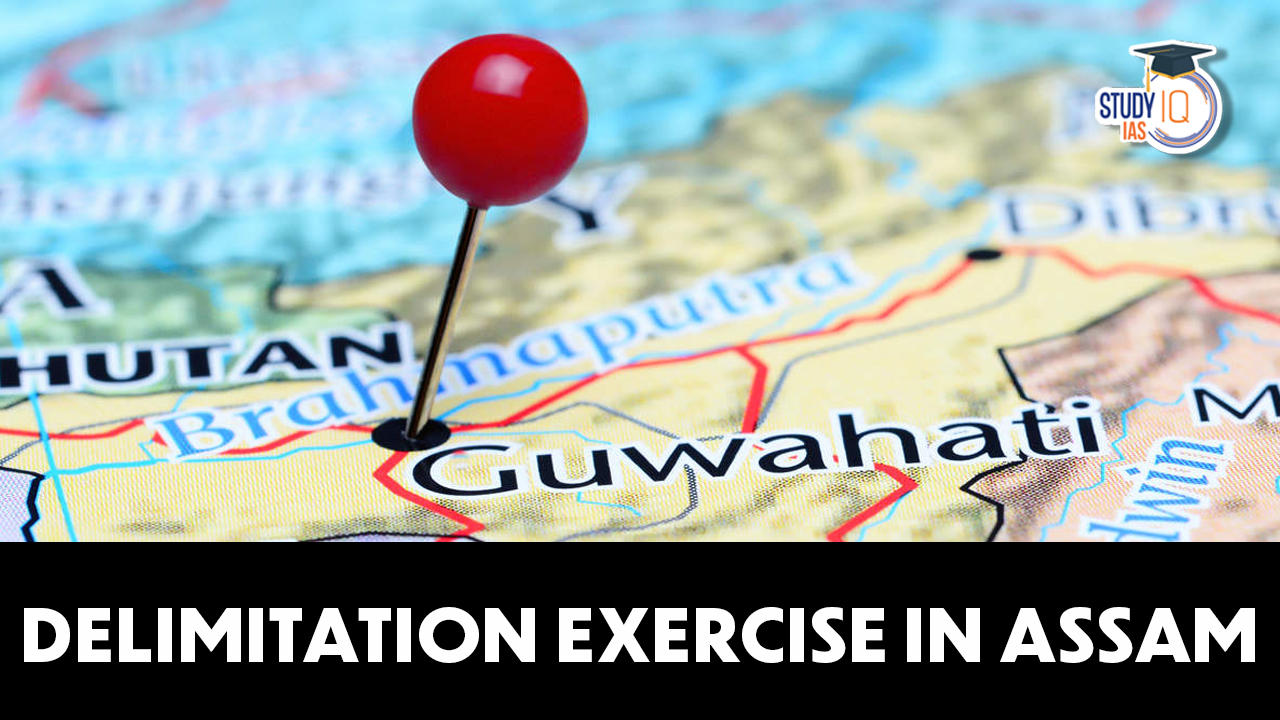Table of Contents
Context: The Election Commission (EC) has released a draft delimitation document for Assam, proposing a change in boundaries of several Lok Sabha and Assembly constituencies of the state.
About the Delimitation Exercise in Assam
- Background:
- The delimitation process was conducted in most parts of the country in 2008. However, it was deferred in Assam and some other Northeastern states at that time due to security concerns.
- In 2020, the Law Ministry issued a notification officially reviving the delimitation exercise in Assam. Subsequently, in December 2022, the Election Commission (EC) announced that it would initiate the delimitation exercise in Assam.
- Highlights of the draft delimitation document:
- The delimitation process was carried out based on data from 2001 Census.
- While the number of seats (126 Assembly and 14 Lok Sabha) are being retained, the EC has proposed not just changes in geographical boundaries, but also an increase in the number of reserved constituencies for Scheduled Tribes (ST) and Scheduled Castes (SC).
- Reserved seats increased: SC assembly seats have increased from 8 to 9; ST assembly seats have increased from 16 to 19.
- Districts with autonomous councils (administered under the Sixth Schedule of the Constitution) get more seats: one assembly seat increased in West Karbi Anglong District; three assembly seats increased in the Bodo Territorial Region.
- Change in nomenclature: Kaliabor Lok Sabha constituency now named ‘Kaziranga’.
- The Election Commission said suggestions and objections to the draft proposal were open till July 11. Following that, the commission would conduct a public hearing in Assam.
About the Delimitation Commission
- The Delimitation Commission in India is a high-power body whose orders have the force of law.
- Composition: The Delimitation Commission is appointed by the President of India includes following members:
- Retired Supreme Court judge
- Chief Election Commissioner
- Respective State Election Commissioners
- Functions:
- To determine the number and boundaries of constituencies to make population of all constituencies nearly equal.
- To identify seats reserved for Scheduled Castes and Scheduled Tribes, wherever their population is relatively large.
- In case of difference of opinion among members of the Commission, the will of majority prevails.
- Powers:
- The Constitution mandates that the Commission’s orders are final and cannot be questioned before any court as it would hold up an election indefinitely.
- The copies of its orders are laid before the House of the People and the State Legislative Assembly concerned, but no modifications are permissible therein by them.
What is Delimitation?
- Delimitation is the act of redrawing boundaries of Lok Sabha and state Assembly seats to represent changes in population.
- Objectives of Delimitation:
- To provide equal representation to equal segments of a population.
- Fair division of geographical areas so that one political party doesn’t have an advantage over others in an election.
- To follow the principle of “One Vote One Value”.
- Constitutional provisions:
- Article 82: This provides the Parliament with the authority to enact a Delimitation Act after every Census.
- Article 170: This provides for the States to get divided into territorial constituencies as per the Delimitation Act after every Census.
- Who carries out delimitation? Delimitation is carried out by an independent Delimitation Commission, appointed by the Government of India under provisions of the Delimitation Commission Act.
- The process of delimitation:
- After the delimitation commission determining the number and boundaries of constituencies, the draft proposals of the Commission are published for public feedback.
- The Commission also holds public sittings. After hearing the public, it considers objections and suggestions, and carries out changes, if any, in the draft proposal.
- The final order is published in the Gazette of India and the State Gazette concerned and comes into force on a date specified by the President.
History of Delimitations in India
- In the history of the Indian republic, Delimitation Commissions have been set up four times — 1952, 1963, 1973 and 2002 under the Acts of 1952, 1962, 1972 and 2002.
- The last delimitation exercise that changed the state-wise composition of the Lok Sabha was completed in 1976 and done on the basis of the 1971 census (more than half a century ago at this point).
- Reasons for not having more frequent delimitation processes:
- Several states feared that states that took little interest in population control could end up with a greater number of seats in the Parliament due to the population provision of delimitation.
- The fear of losing meaningful political representation was especially great in the southern states which not only had had greater success in controlling populations but also economically developed.
- To allay these fears, the Constitution was amended during Indira Gandhi’s Emergency rule in 1976 to suspend delimitation until 2001.
- Another amendment postponed this until 2026. It was hoped that the country would achieve a uniform population growth rate by this time.





















 WhatsApp
WhatsApp